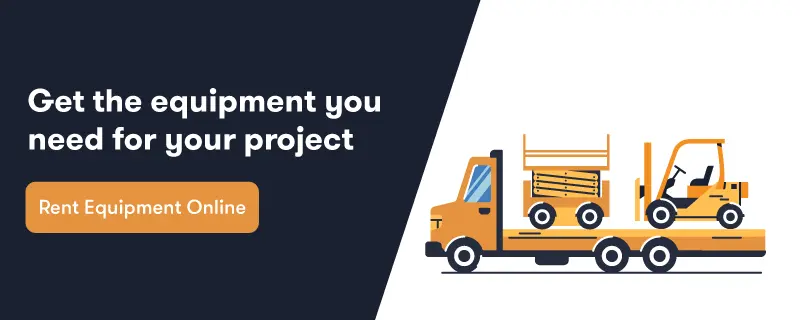forklift load backrest
forklift pocket size
miami forklift rental
American infrastructure statistics indicated a funding gap of $2.6 trillion in 2023. Due to underspending on infrastructure, the U.S. could lose $10 trillion by 2039.
We usually think about “infrastructure” as roads and bridges, but the term encompasses all kinds of public works. Many types of infrastructure are integral to modern society, including:
- Water supply facilities
- Waterways, dams and levees
- Electricity plants
- Hazardous waste disposal plants
- Parks and recreation facilities
- Transportation structures
- Schools
America’s infrastructure system needs continual maintenance, and that process takes federal funding. To better understand the current state of U.S. infrastructure, we’ll share dozens of infrastructure statistics that we’ve compiled.
Table of Contents:
- The State of America’s Infrastructure
- U.S. Infrastructure Investment
- How Does America’s Infrastructure Compare Internationally?
- Energy Statistics
- Telecommunications Statistics
- Transportation Statistics
- Improving U.S. Infrastructure
The State of America’s Infrastructure
The American Society of Civil Engineers (ASCE) assesses the quality of U.S. infrastructure every four years via a report card. America earned an overall grade of C- in 2021 — a slight improvement from the D+ issued in 2017. And that’s not the worst of it — among the 17 types of American infrastructure, 11 got a grade in the D range. We’ll be looking for the next report card in 2025 to gauge the quality of infrastructure improvements made throughout the U.S.
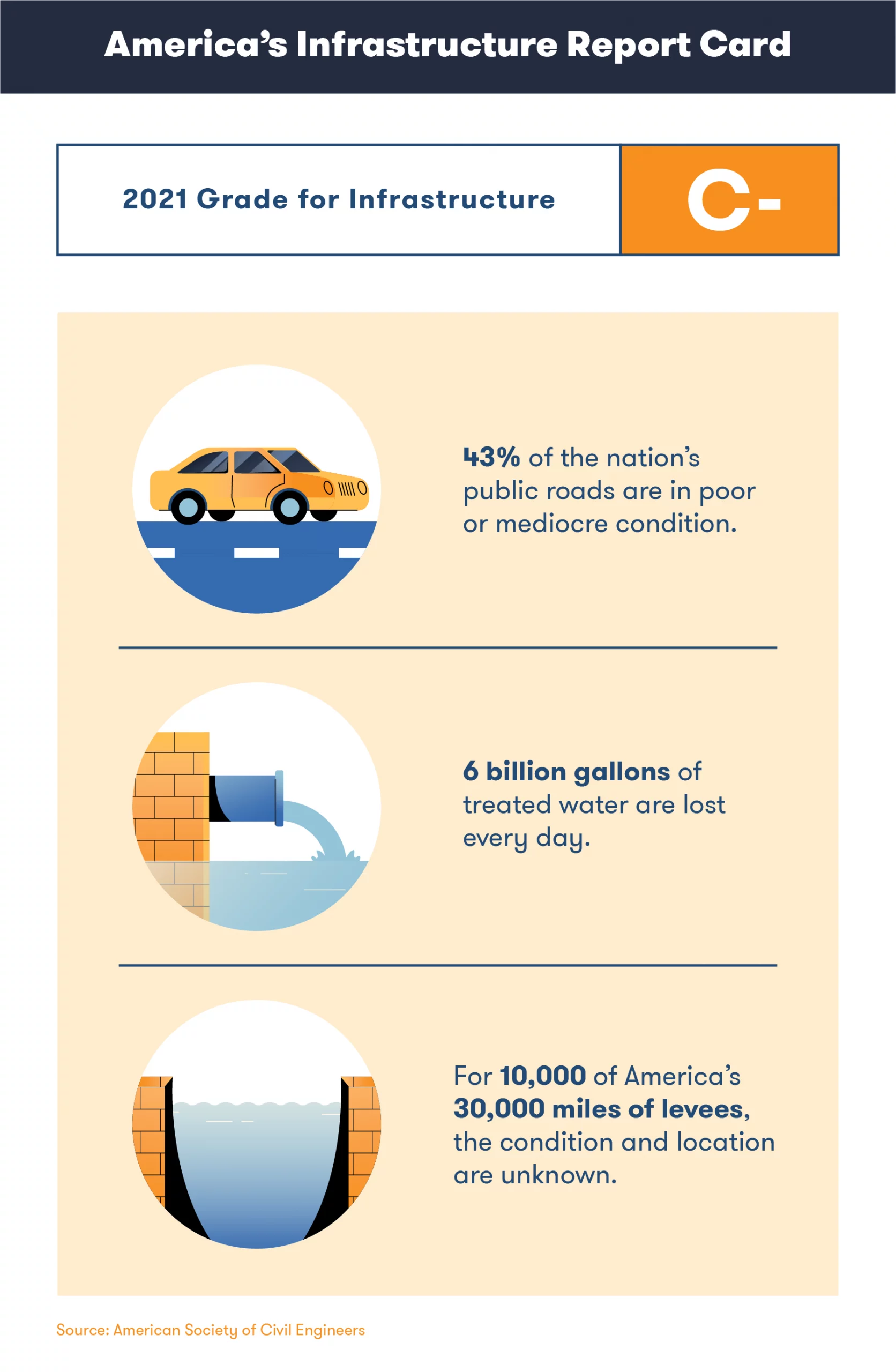 Among the ASCE report’s findings:
Among the ASCE report’s findings:
- Wear and tear have left 43% of public roads in poor or mediocre condition.
- About 6 billion gallons of treated water are lost every day in the United States. This is enough to fill more than 9,000 swimming pools daily.
- More than 30,000 miles of inventoried levees exist across the country. For 10,000 miles of levees, their condition and location aren’t known.
Substandard infrastructure costs money, jobs and lives. For example, the Davenport apartment collapse, which occurred in Iowa on May 28, 2023, resulted in one nonfatal injury and three fatalities. A 113-page investigative report concluded that inadequate repairs and longstanding improper maintenance caused this collapse.
Poor infrastructure will also fail to withstand extreme conditions — power grid failures in Texas during extreme cold disrupted countless lives and destroyed homes. The drinking water crisis in Flint, Michigan, sickened thousands of residents, many of them children.
Repairs and new construction are imperative to the state of America’s infrastructure, which means devoting millions of dollars to the costs of materials and construction equipment rentals, as well as worker salaries. To that end, it falls on lawmakers to prioritize these concerns.
U.S. Infrastructure Investment
President Joe Biden’s approved Bipartisan Infrastructure Law, combined with his Build Back Better Framework, invests roughly $3 trillion in infrastructure development over the next 10 years. The proposal also focuses on issues like creating jobs and cutting engine emissions to combat climate change.
However, the ASCE identified a $2.6 trillion funding gap in its 2023 report card. The group warns that investing too little will be far more costly in the long run. By 2039, failing to prioritize infrastructure could cost the nation’s gross domestic product (GDP) $10 trillion and more than 3 million American jobs. That’s equal to $3,300 a year for the average American household.
Transportation infrastructure is a big concern for the ASCE, prompting thorough action from lawmakers. In 2023, the Department of Transportation allocated $68.9 billion to the Federal-aid Highway program. $9.4 billion stems from the Bipartisan Infrastructure Law.
Air travel and cargo transport remain vital to America’s economy. The U.S. Airline Industry, including passenger and cargo airlines, continues to see growth in jobs, with 812,698 workers in December 2023, up 8.4% from pre-pandemic December 2019. The Freight Transportation Services Index (TSI) was 139.1 in December 2023 — a 0.9% increase from November 2023 and a 1.8% increase from December 2022. These figures are based on the amount of freight carried by the for-hire transportation industry.
Even wider gaps exist in datasets for other infrastructure areas, though the overall needs are less costly. For instance, the ASCE estimates that almost $20 billion is needed to repair America’s high-hazard potential dams. Funding also is well below half of what’s needed for:
- Levees
- Parks and recreation facilities
- Inland waterways and ports
Schools, hazardous waste facilities and air transport also fall well short of required funding levels.
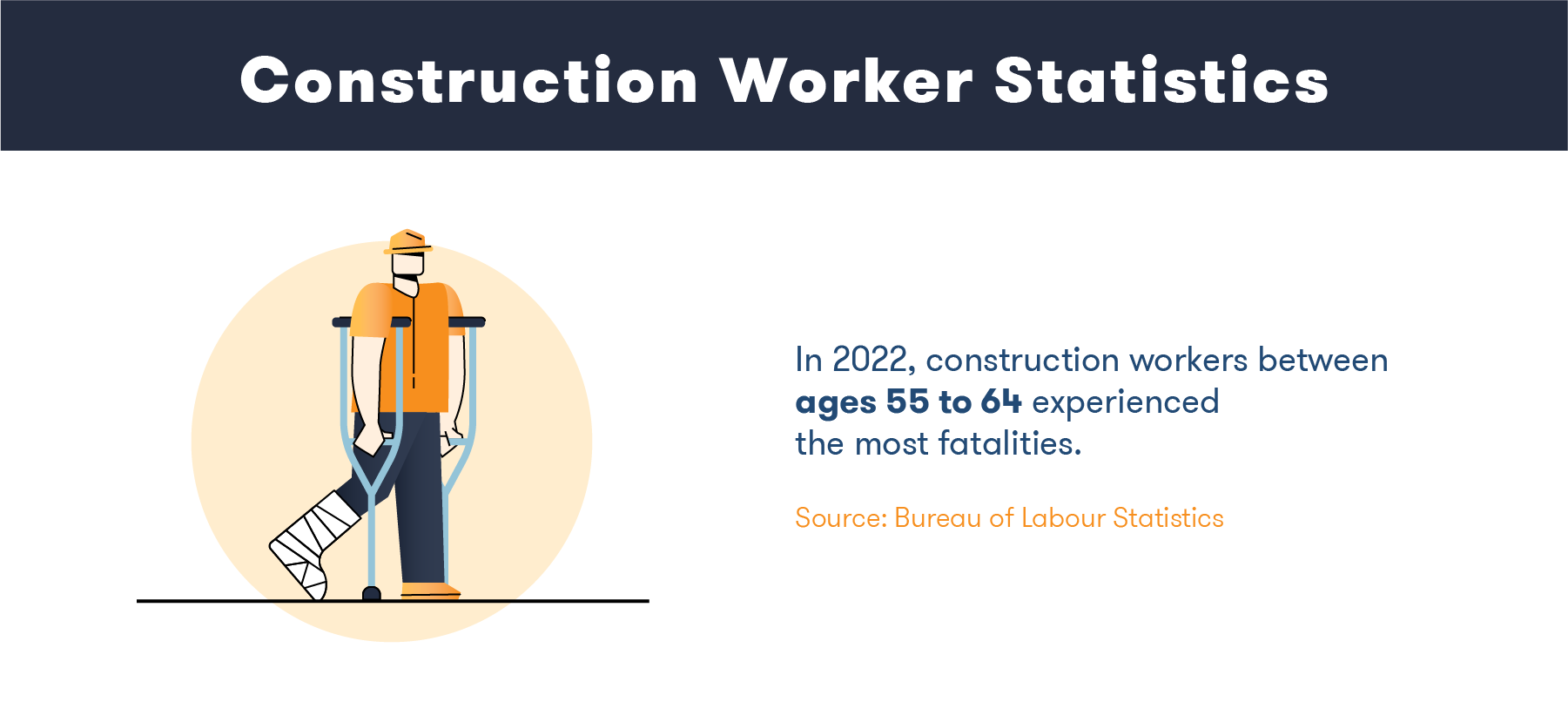
How Does America’s Infrastructure Compare Internationally?
The U.S. invests less of its GDP in infrastructure development than many other countries. This hampers its overall competitiveness, according to ASCE, and the private sector is headed for major losses as a result. The ASCE projects that the U.S. will lose $2.4 trillion in exports over the next 20 years.
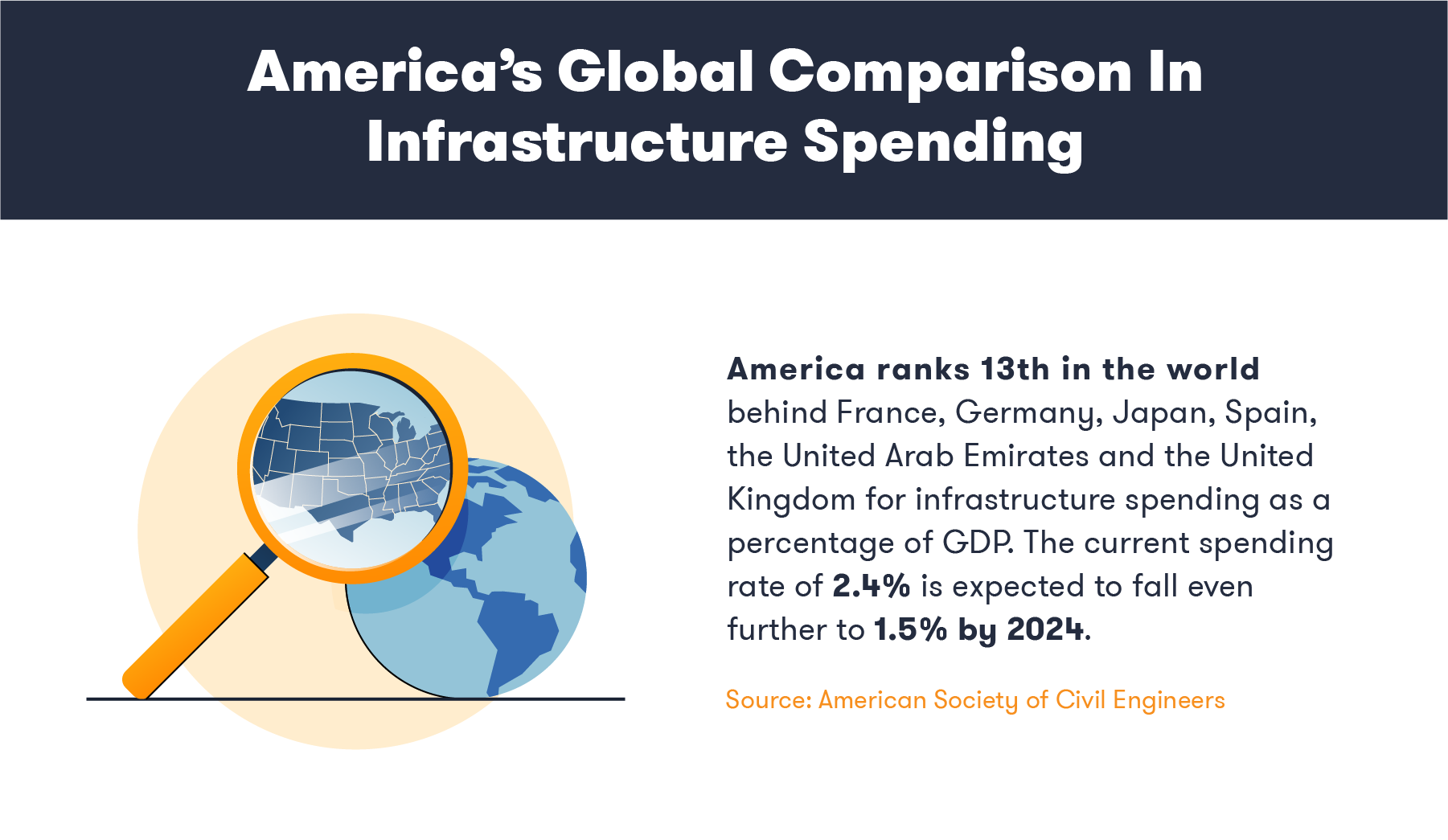 The United States’ spending as a percentage of GDP, at just 2.4%, ranked 13th globally in 2019. Among other countries, the U.S. fell behind France, Germany, Japan, Spain, the United Arab Emirates and the United Kingdom. And by 2040, U.S. numbers are expected to fall further to 1.5%.
The United States’ spending as a percentage of GDP, at just 2.4%, ranked 13th globally in 2019. Among other countries, the U.S. fell behind France, Germany, Japan, Spain, the United Arab Emirates and the United Kingdom. And by 2040, U.S. numbers are expected to fall further to 1.5%.
By comparison, below are projected levels of infrastructure spending by 2040, as a percentage of GDP, for the U.S. and several other nations:
- China: 5.1
- Indonesia: 4.1
- Australia: 3.6
- India: 3.6
- Japan: 3.2
- South Korea: 2.9
- South Africa: 2.9
- Russia: 2.8
- Brazil: 2.7
- France: 2.6
- Canada: 2.5
- Italy: 2.4
- Saudi Arabia: 2.3
- Argentina: 2.2
- United Kingdom: 1.8
- Turkey: 1.8
- Germany: 1.6
- United States: 1.5
- Mexico: 1.3
Energy Statistics
Energy infrastructure generates, transmits and distributes power. Here is a breakdown of how much we use different forms of energy, according to the U.S. Energy Information Administration:
- Natural gas accounts for 39% of power generation.
- Coal accounts for 17% of power generation.
- Nuclear power accounts for 19.5% of power generation.
- Renewable sources account for 24% of power generation.
- Petroleum accounts for 0.5% of power generation.
Spending for America’s electric grid is used to generate, transmit and distribute energy throughout the nation. More substantial spending has been allocated to the grid in recent years as more severe weather events and aging transmission lines have combined to increase outages.
Utilities across the country are taking steps to incorporate renewable sources and respond more proactively to climate change by making the grid more resilient. This is good news because an additional $338 billion needs to be spent by 2039 to ensure a reliable grid, ASCE estimates.
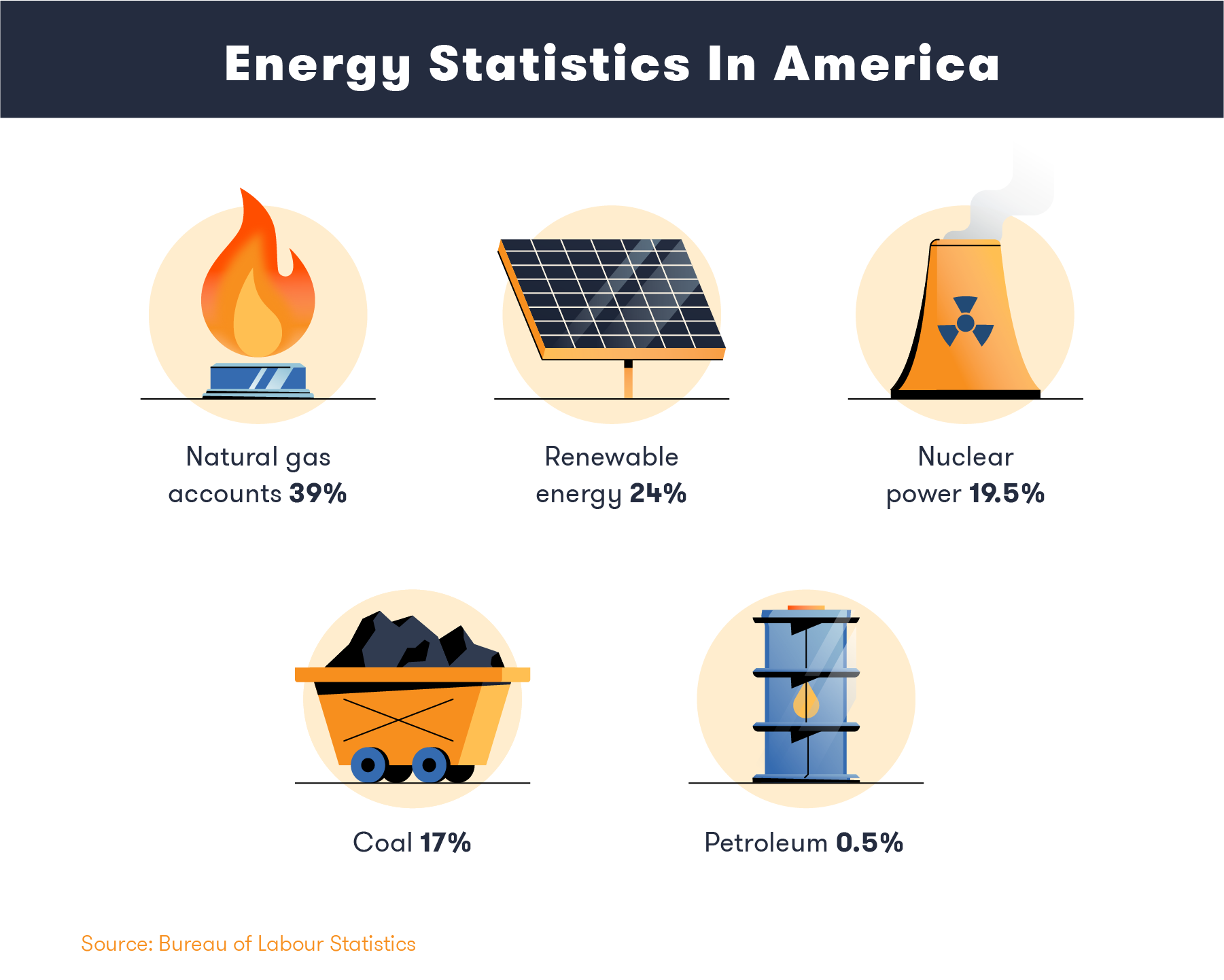
Telecommunications Statistics
Internet use has grown substantially over the first two decades of the 21st century. By 2023, 95% of American adults use Internet services, up from just 52% in 2000. However, a large gap exists between urban and rural areas in terms of high-speed internet access.
Urban areas largely enjoy the widespread accessibility of high-speed internet, while many rural areas still lack reliable internet access. Approximately 24 million Americans live without access to broadband internet. Of those, 80% live in rural areas.
This hampers progress for businesses in those areas, as well as for schools, which rely on the Internet as part of their curriculum. Despite the 2020 shift to online schooling, ASCE estimated that one in five school-aged children lacked the high-speed internet they need to access lessons.
Some other statistics:
- Mobile revenues account for 54.2% of the telecommunication services market in North America.
- Each year, the government spends more than $100 billion on information technology.
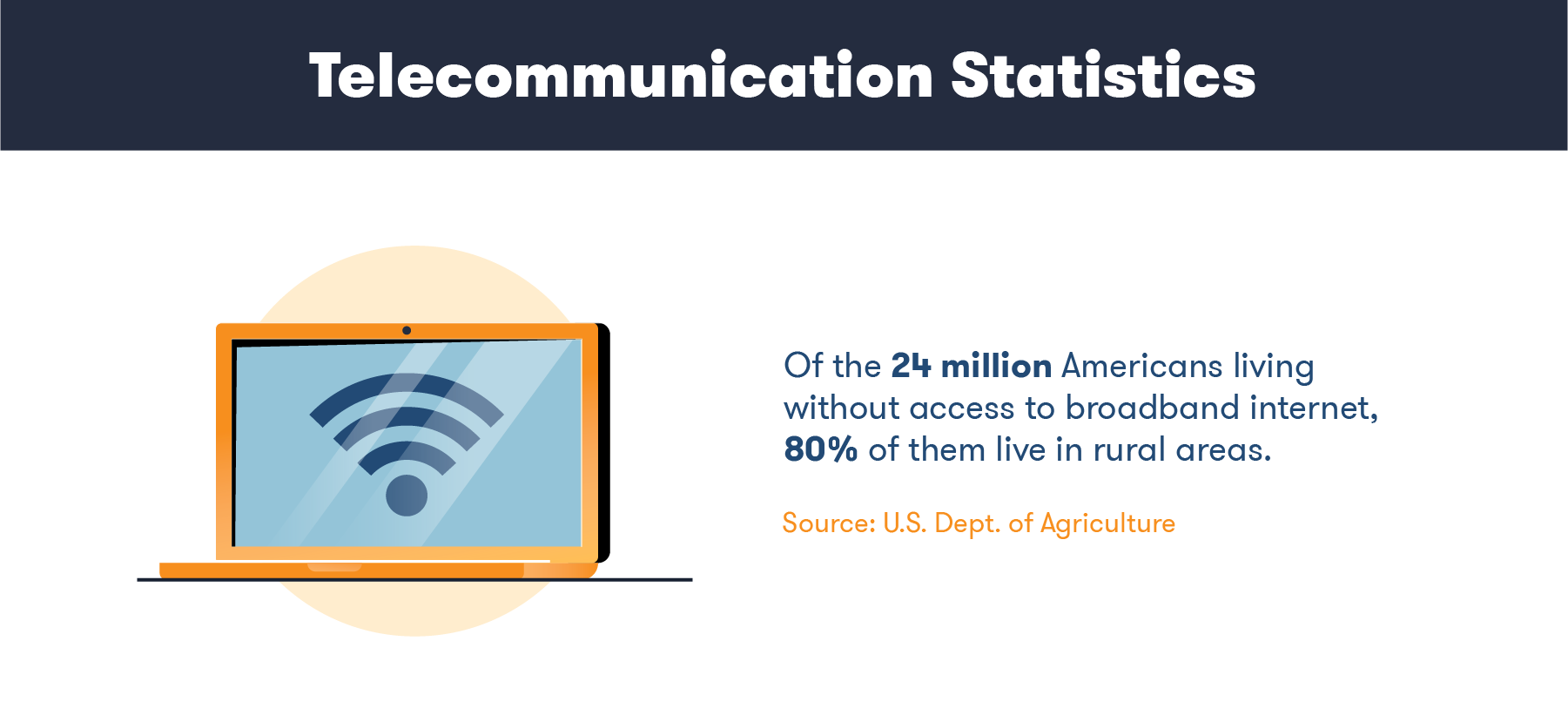
Transportation Statistics
The U.S. transportation system consists of a variety of components, including:
- Roads
- Bridges
- Ports
- Waterways
- Rail systems (passenger, freight and light rail)
- Air travel
It serves users seeking to move themselves and/or freight from one place to another for commuting, traveling, working or transporting goods.
The transportation system is meant to serve all U.S. residents as well as visitors. Before the pandemic which halted most transportation globally, passenger travel in the U.S. saw 5.6 trillion miles on highways, 730 billion miles on commercial airlines, 54 billion miles on public transit and 6 billion miles on Amtrak in 2019, with over 3,000 trips made by each household in a year.
By the end of 2022, about 24.4 million Americans worked from home — compared to the 15.4 million people who worked from home in 2019.
Air travel and public transit remain lower than pre-pandemic levels since the rise of remote working, commuting and work-related travel — which once accounted for 40% of usage — are less of a factor. The net value of U.S. transportation capital stock in 2022 was a substantial investment at $10.68 trillion, with 55.8% owned by the public sector and 44.2% owned by the private sector.

Waterways
The Mississippi River and its tributaries, along with the Columbia, Sacramento, and San Joaquin Rivers, make up the nation’s “water highway.” This network totals 12,000 miles of navigable waterways for freight transportation.
Inland waterways move about 830 million tons of cargo each year, and one barge can move as many as 70 tractor-trailers or 16 train cars. Yet ASCE gave the condition of America’s inland waterways just a D+ grade. The group found that delays cost up to $739 an hour for an average tow. That adds up to $44 million a year.
And help isn’t on the way quickly, although a barge-tax increase on shippers has raised $25 million. Despite the increase, there’s still a backlog of $6.8 billion worth of construction projects. Combined with continuing lock closures, this equals 5,000 hours lost between 2015 and 2019.
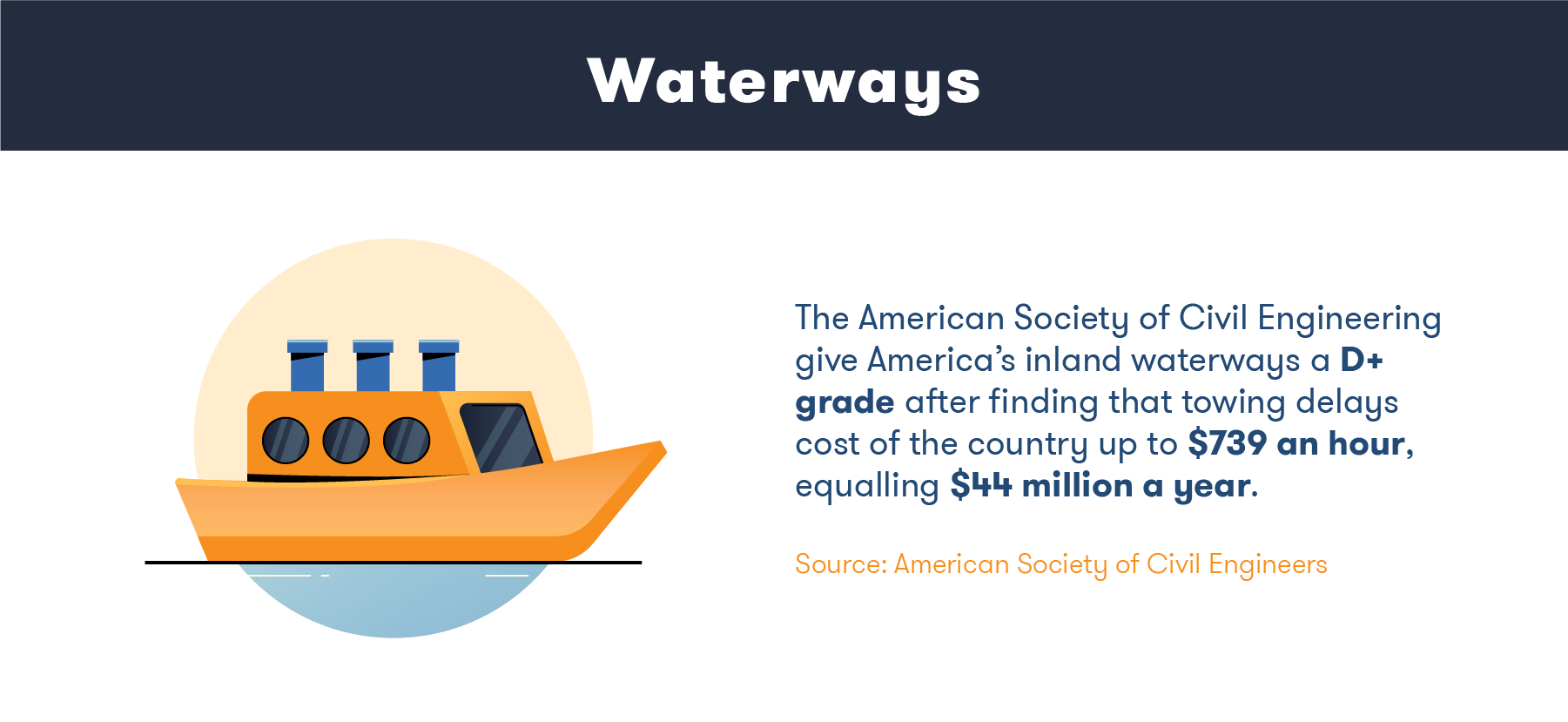
Roads
Nearly $17 trillion in goods (72% of the overall total) travel American highways and roads every year, according to ASCE. Yet growth in road width and miles has remained stagnant since 2010, even as the count of registered vehicles has grown.
Vehicle numbers are projected to hit 289.5 million in 2021, compared with 248.7 million in 2012 — a traffic increase of 16.4%. The increased numbers are traveling on roughly the same roadways as before, though.
The number of centerline miles of roadway (one mile in length as measured along highway centerlines) remained around 4.2 million from 2010 to 2018. Lane miles (centerline length multiplied by the number of lanes) stayed at or near 8.8 million miles.
Driving on overcrowded American roads in poor or mediocre conditions costs motorists up to $141 billion a year, according to TRIP, a national transportation research nonprofit. This translates to $621 per driver for repairs, increased fuel use and tire wear and faster vehicle depreciation.
One of the most common pieces of equipment used to create the foundations for highways or sidewalks is a single or double drum roller.
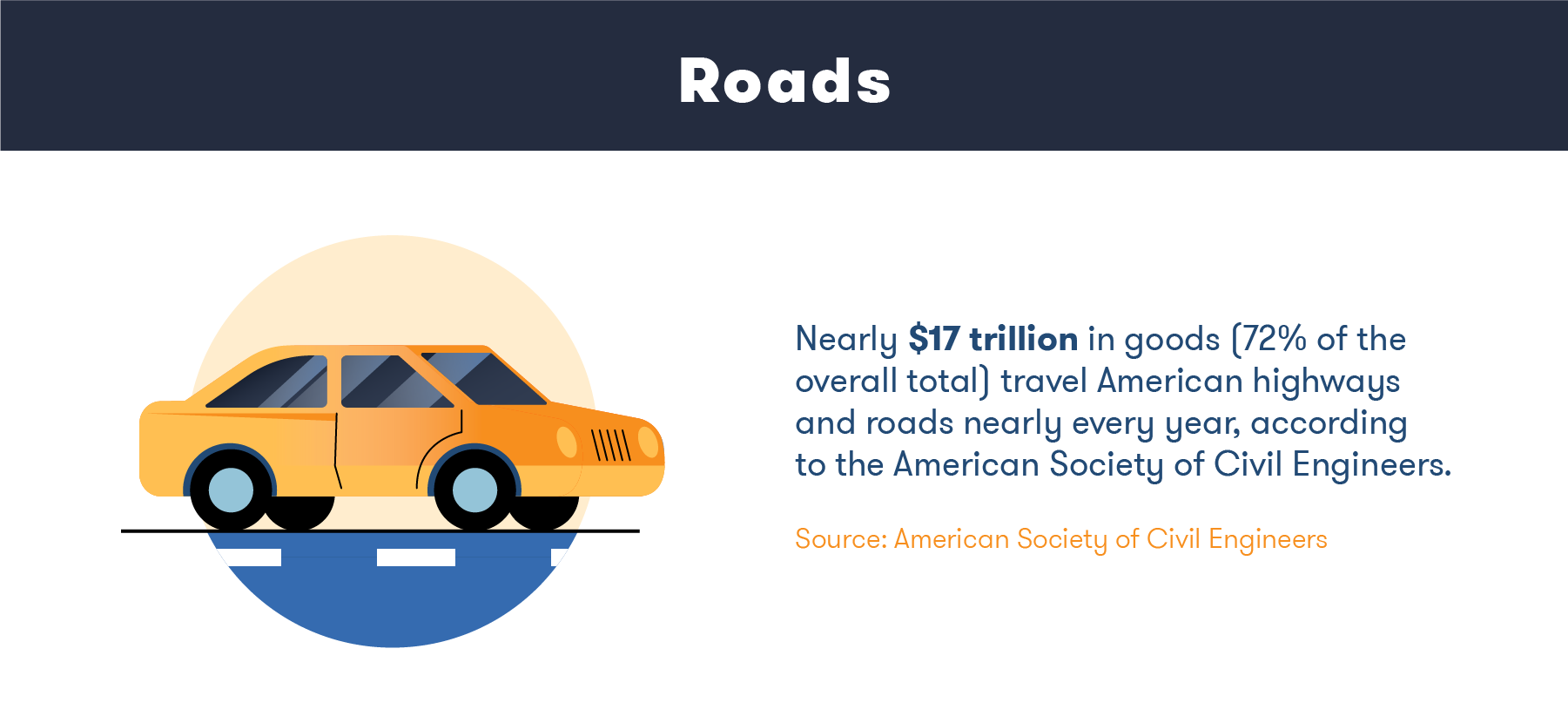
Bridges
The state of the nation’s various types of bridges is also cause for concern, both in terms of age and condition.
Of 617,084 usable bridges in the U.S., 42% are more than 50 years old. Among those, 46,000 are rated “structurally deficient.” That means they’re in poor condition, though not in imminent danger of collapsing.
Interstate highway bridges accounted for 9.4% of all bridges in America — but they carried 45.5% of the nation’s motor vehicle traffic.
In 2021, the U.S. Department of Transportation (USDOT) reported that the country faced a $1.01 trillion backlog in road and bridge repairs based on data gathered through 2016. To improve transit conditions, relieve congestion and improve traffic safety, the department recommended a 29% funding increase for roads and bridges to total $136 billion annually.
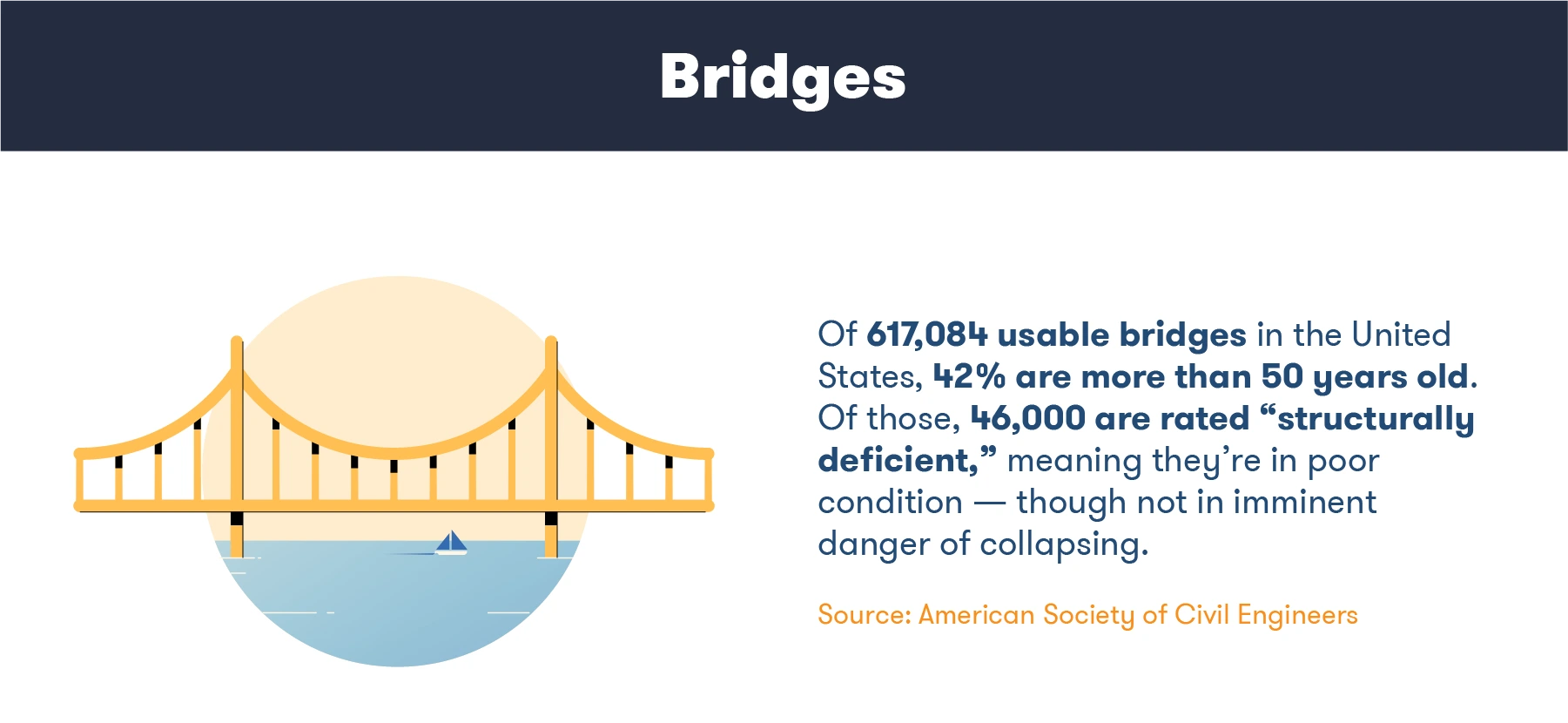
Transit
Transit ridership hit a peak of 9.9 billion in 2014 before declining to 9.1 billion in 2018, according to the USDOT. This was well before the COVID-19 pandemic reduced transit use, as more employees worked from home and public transport was limited.
Monthly transit still remained 44% below pre-pandemic levels in 2021, with intercity bus ridership 56% below. Due to COVID-19 restrictions, 37 docked bikeshare systems permanently closed, leaving only 66 in 2021 of the 103 in 2019. Two hundred and fourteen e-scooter systems and 60 dockless bikeshare systems opened in June 2021, down from 239 and 71 in 2019 respectively.
Among forms of public transit, buses had the highest share of transit trips in 2018 at 53%. But because bus passengers tend to take shorter trips, buses ranked lower (31%) in the number of person-miles traveled. Rail transit showed the opposite trend. It comprised 15% of transit vehicles but covered 46% of trips and 60% of person miles.
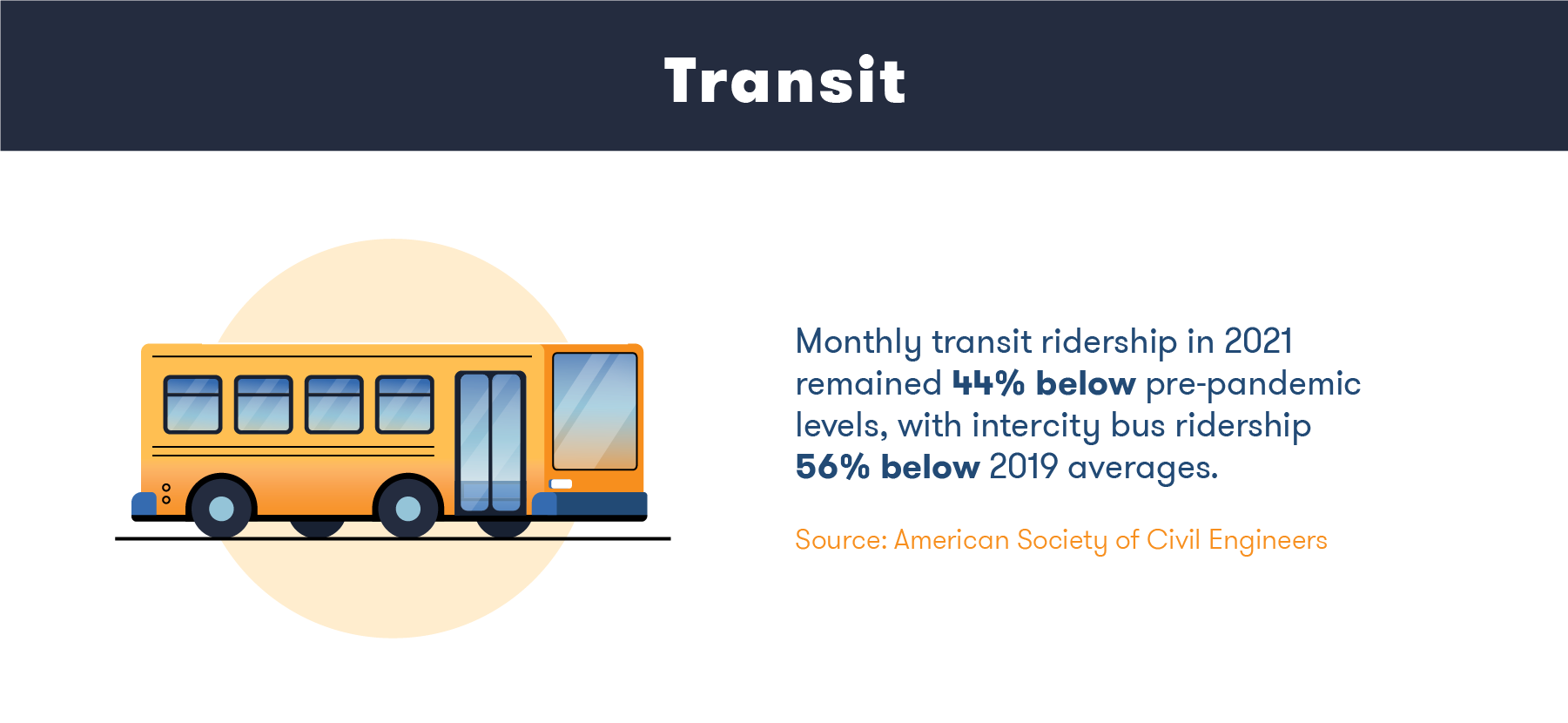
Airports
In 2019, there were 19,600 airports in the United States. The 50 busiest American airports serve 85% of all U.S. air travelers. Aviation infrastructure is essential for the purpose of sustaining airplanes and airports.
Airport use was rising before the pandemic. The number of air passengers hit an all-time high in February 2020, before COVID-19 restrictions were put in place. Air transportation services support 1.4 million jobs in the U.S., and tourism brings in billions in revenue each year. However, delays and the state of the airport system cost the economy more than $35 billion annually.
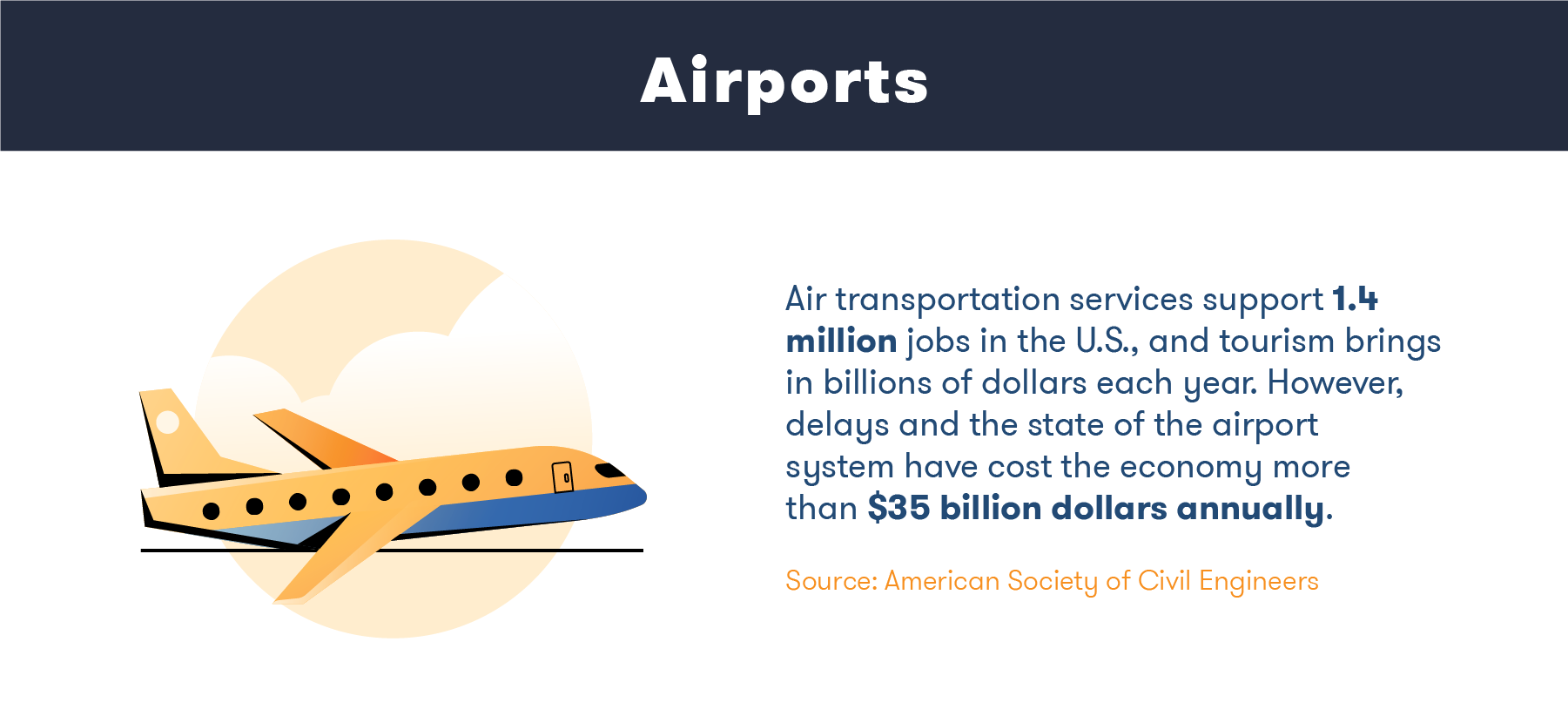
Improving U.S. Infrastructure
America’s budget is finite, and reallocating the nation’s funds is a complex process. Lawmakers can gradually improve infrastructure by monitoring national statistics. And when the time comes to make renovations, contractors will need equipment that’s up to par.
If you need a backhoe, an excavator, or any other kind of heavy equipment, check out our inventory. BigRentz is the largest construction logistics company in America, and any one of our 12,000 locations can assist you with the equipment you need for your project.
